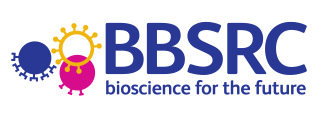Human Ageing Genomic Resources
The Human Ageing Genomic Resources (HAGR) is a collection of databases and tools designed to help researchers study the genetics of human ageing using modern approaches such as functional genomics, network analyses, systems biology and evolutionary analyses.
Search HAGR
GenAge
A major resource in HAGR is GenAge, which includes a curated database of over 300 genes related to human ageing and a database of over 2000 ageing- and longevity-associated genes in model organisms.
GenDR
GenDR is a database of genes associated with dietary restriction based on genetic manipulation experiments and gene expression profiling.
LongevityMap
The LongevityMap is a database of human genetic variants associated with longevity. Over 2,000 genes and variants previously studied in context of longevity are featured.
HAGR by Organism
All the genes across the HAGR databases can be browsed by organism using the links below
Other Datasets, Tools and Projects
Other projects we are involved in include drugs and compounds, evolutionary studies, genome sequencing, cancer genomics, and gene expression analyses. The latter allowed us to identify a set of genes commonly altered during mammalian ageing which represents a conserved molecular signature of ageing.
In addition to developing datasets and performing numerous analyses we develop computational tools and software, including a Perl toolkit entitled the Ageing Research Computational Tools (ARCT), and a method to calculate the rate of ageing of a given population based on demographic parameters.
If you are interested in the genomics of ageing, please spare a moment to read our scientific strategy. For an introduction and description our resources please refer to our latest academic publication. In case you are lost, you can visit our help section or get an overview of all data in our resources. You can also learn more about our projects and the people responsible, and please remember to read our disclaimer and copyright. Usage of HAGR or any of its associated resources implies you have read, understood, and accepted our terms and conditions and will abide by them. Lastly, we have an extensive list of links regarding computational biology, genomics, gerontology, and comparative biology.
HAGR is employed by numerous researchers around the world and has been cited in hundreds of publications. It was highlighted in Science (307:187), Nature Reviews Genetics (5:1362), and BioTechniques (39:21).
Feedback on all aspects of HAGR is always appreciated. To receive the latest news and announcements concerning HAGR, please join the HAGR-news mailing list. To stay up-to-date with the discoveries and papers on the science of ageing, please follow us on Twitter or like our Facebook page.




